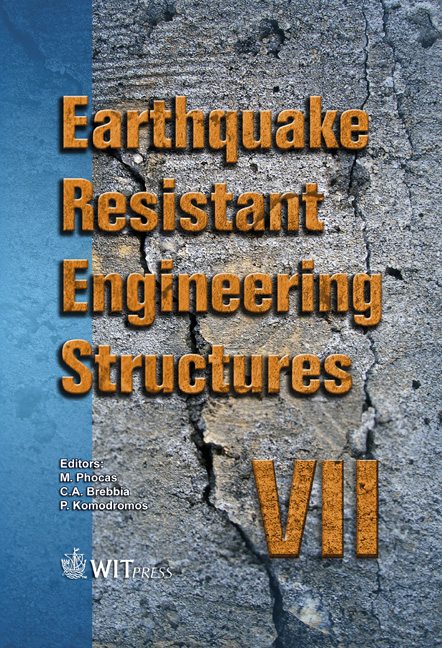Influence Of Carbon Fibre-reinforced Polymers Reinforcing On The Seismic Behaviour Of Timber-framed Walls With Fibre-plaster Sheathing Boards
Price
Free (open access)
Transaction
Volume
104
Pages
10
Page Range
409 - 418
Published
2009
Size
479 kb
Paper DOI
10.2495/ERES090371
Copyright
WIT Press
Author(s)
M. Premrov & P. Dobrila
Abstract
This paper provides an experimental analysis of timber-framed walls, coated with carbon fibre-reinforced polymers (CFRP) strengthened fibre-plaster boards. The presented wall elements are usually used as main bearing capacity elements in the construction of prefabricated multi-level timber residential buildings. Since the tensile strength of fibre-plaster sheathing boards (FPB) is approximately 10 times lower than the compressive strength, cracks in the tensile diagonal board’s direction usually appear in tall buildings in heavy seismic areas. Therefore, in such cases, it is convenient to strengthen boards with high-strength materials in order to gain a higher capacity. It has been experimentally shown that the inclusion of CFRP diagonal strip reinforcement on the load-carrying capacity can be quite high and that it is maximized when the carbon strips are connected to the timber frame. On the other hand, the ductility itself was not significantly improved. Finally, a numerical study for FPB, which are glued to the timber frame and strengthened with CFRP strips, is preliminary presented for possible new technological solutions for treated wall elements in heavy seismic areas in the future. Keywords: timber structures, walls, fibre-plaster boards, carbon fibres. 1 Introduction There is an increasing tendency worldwide towards building multi-level prefabricated timber structures. It is clear to competitive fields of building that today’s timber frame building is extremely highly valued and it is capable of
Keywords
timber structures, walls, fibre-plaster boards, carbon fibres.





